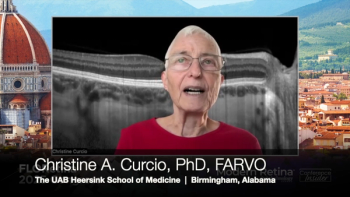
CCT a strong predictor of glaucoma
Central corneal thickness (CCT) measurements should be included as part of a complete ocular examination, particularly in patients at risk of developing primary open angle glaucoma (POAG), according to a study conducted by the American Academy of Ophthalmology and published in the journal Ophthalmology.
Central corneal thickness (CCT) measurements should be included as part of a complete ocular examination, particularly in patients at risk of developing primary open angle glaucoma (POAG), according to a study conducted by the American Academy of Ophthalmology and published in the journal Ophthalmology.
The investigators conducted a PubMed literature search of all English language articles in 2004 in order to assess whether CCT is a risk factor for the presence, development or progression of glaucomatous optic nerve damage related to POAG. The search yielded 195 articles and, during the in-depth review process, the authors selected an additional 24 studies of interest.
The articles were assigned to one of three categories, depending on the strength of evidence presented in the paper as defined by the panel methodologist. Level I signified a well-designed, properly conducted, randomised clinical trial or similar quality-validated cohort study, with appropriate reference standards. Level II was assigned to well-designed, case-control studies, exploratory cohort studies and other non-randomised clinical studies, lacking consistently applied reference standards. A Level III rating was reserved for poorly designed case-control studies, case series and papers consisting only of expert opinion without supporting evidence. Furthermore, a positive grading was also given to studies in which a statistical association was found between CCT and the risk of having or developing glaucomatous optic nerve damage. All other studies received a negative grading.
The results from Level I and Level II papers showed strong and consistent evidence that CCT is a risk factor for progression from ocular hypertension (OHT) to POAG. Studies, however, that were rated as providing the highest quality of evidence revealed mixed results.
Notwithstanding this, based on the overall results, the authors were able to conclude that measuring CCT is an important component of a complete ocular examination, in particular for patients at risk of developing POAG. They, therefore, urge that CCT measurement be included in the examination of all OHT patients.
Newsletter
Get the essential updates shaping the future of pharma manufacturing and compliance—subscribe today to Pharmaceutical Technology and never miss a breakthrough.







































